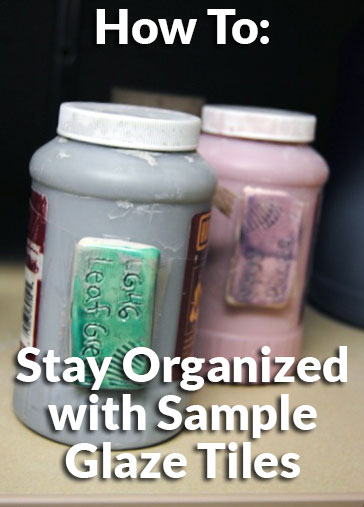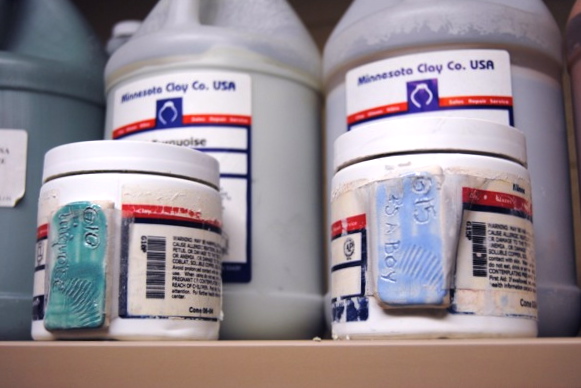Art teachers are always looking for the next best way to sort our assortment of clay supplies. Yes, I get a little giddy when things are neatly organized, and it brings me great pride when students mention how these organizational tidbits work well and make everyone’s life in the art room that much easier.
One magnificent tip to help students understand glazes is to create glaze tiles!
I got the idea because when it came time to glaze, no one ever knew what “Firecracker” or “Amber” would actually look like. Glaze tiles solve this problem. In addition, if you attach the glaze tiles directly to the glaze containers, it makes everything even easier!

How to Create Glaze Tiles
- Roll out slabs of clay.
- Cut out small rectangles that will fit on your glaze containers.
- Label each clay tile with the glaze number and glaze color title.
- Add texture to your clay tile to show students what the glaze will look like in grooves.
- Bisque fire the tiles.
- Glaze the tiles with the correct color.
- Glaze fire the tiles.
Make sure you double check your glazes to see what temperatures they need to be fired to. Do separate firings if necessary. - Use clear tape or velcro to attach your glaze tiles to the correct containers.
Alternately, you can attach the tiles to the container lid. This way, when it’s time for a new jar, you can just re-use the lid with the glaze tile already attached.
Voila! No more glaze color confusion! Students will know exactly what the finished glaze color will look like, and so will you.
I buy the glaze color in both pint and gallon sizes. I use the pint-sized jars with students and refill them with the glaze from the gallon jugs when needed. It saves a little extra money to order in bulk sizes.

Creating glaze tiles is a great way to help students choose the right colors for their project and a great way to help you organize stay organized!
How do you label glazes for students to use in the art room?
Any other ceramics organization tips out there?
Magazine articles and podcasts are opinions of professional education contributors and do not necessarily represent the position of the Art of Education University (AOEU) or its academic offerings. Contributors use terms in the way they are most often talked about in the scope of their educational experiences.




